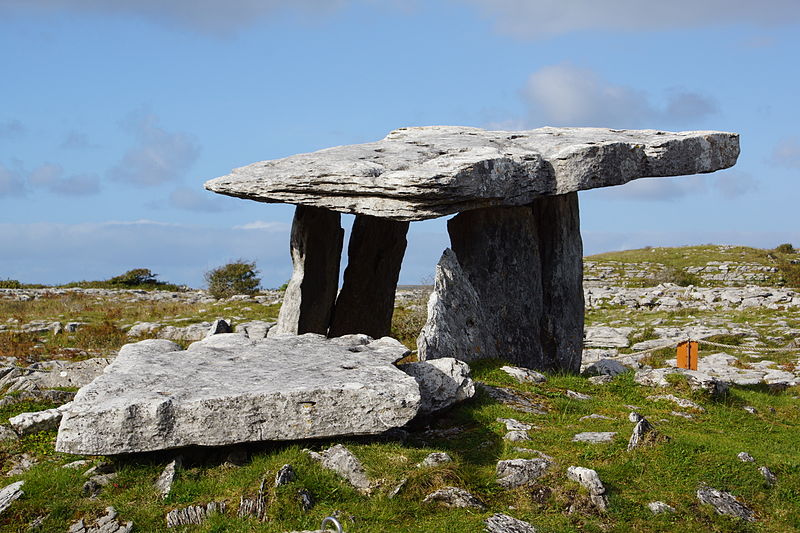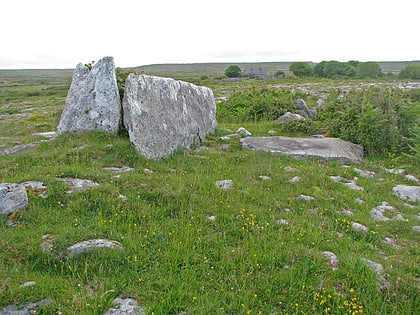Poulnabrone Dolmen

Facts and practical information
Poulnabrone Dolmen stands as a hauntingly evocative portal tomb in the stark limestone landscape of the Burren in County Clare, Ireland. This archaeological marvel, estimated to have been constructed around 3600 BCE during the Neolithic period, serves as a silent testament to the island's ancient past. Its name, when translated from Irish, means "the hole of the sorrows," a fitting moniker for a site that was once a sacred place of burial.
The dolmen consists of a large, flat capstone resting atop slender, upright portal stones, creating a chamber within a low cairn. This megalithic structure was not merely a grave marker but a communal tomb for the Neolithic inhabitants of the area. Excavations in the 1980s revealed the remains of more than 20 individuals, both adults and children, along with a rich assortment of grave goods that included pottery, a polished stone axe, and personal ornaments, indicating a high level of craftsmanship and trade.
Poulnabrone Dolmen's stark silhouette against the karst landscape of the Burren is a powerful symbol of Ireland's ancient culture and its enduring mysteries. The site, which is easily accessible to the public, offers visitors an intimate connection to the distant past and has become an iconic representation of Irish heritage. As it has weathered the elements for thousands of years, Poulnabrone Dolmen continues to captivate the imagination and draw the attention of archaeologists, historians, and tourists alike.
Poulnabrone Dolmen – popular in the area (distance from the attraction)
Nearby attractions include: Aillwee Cave, Leamaneh Castle, Caherconnell Stone Fort, Newtown Castle.


















